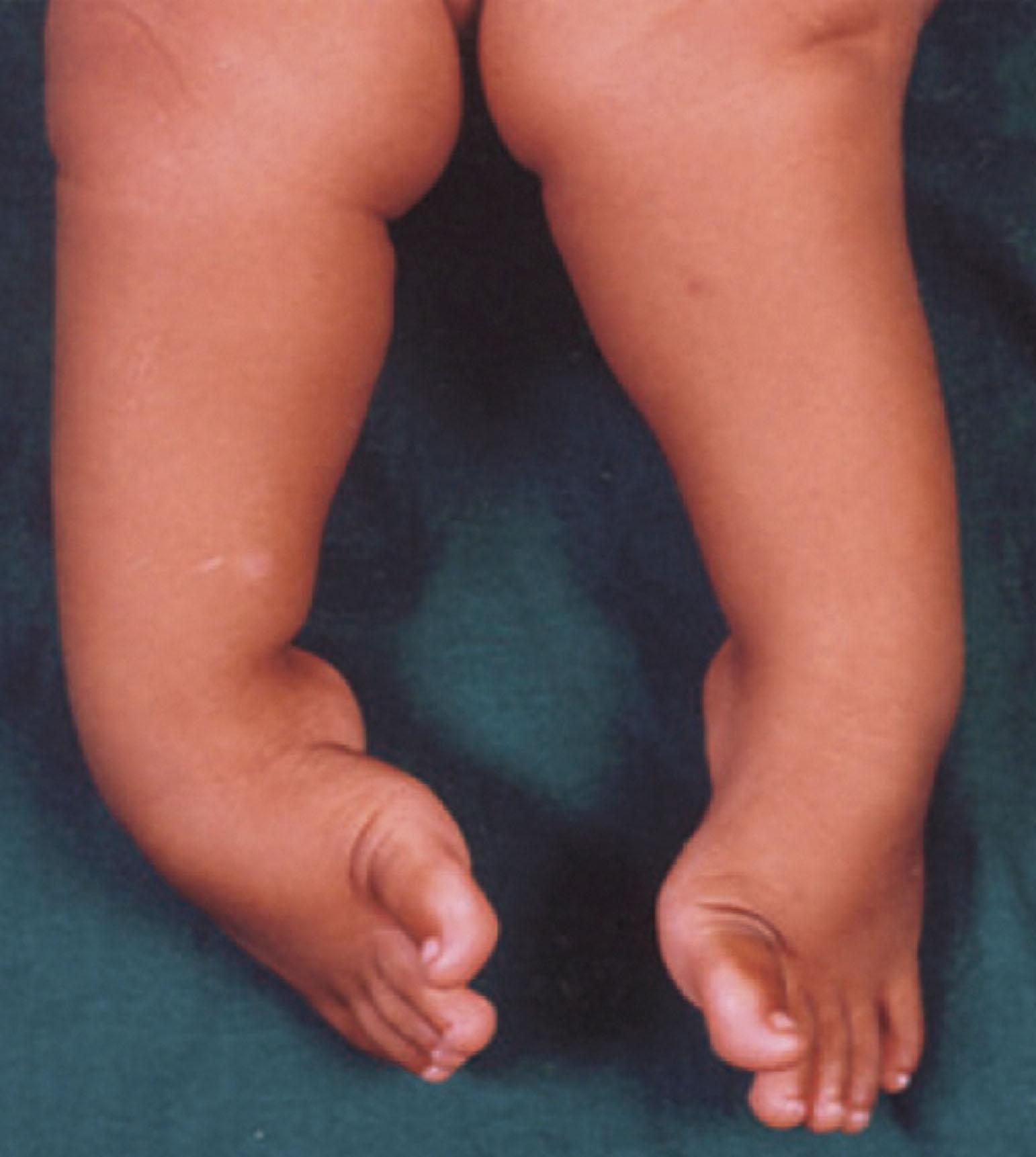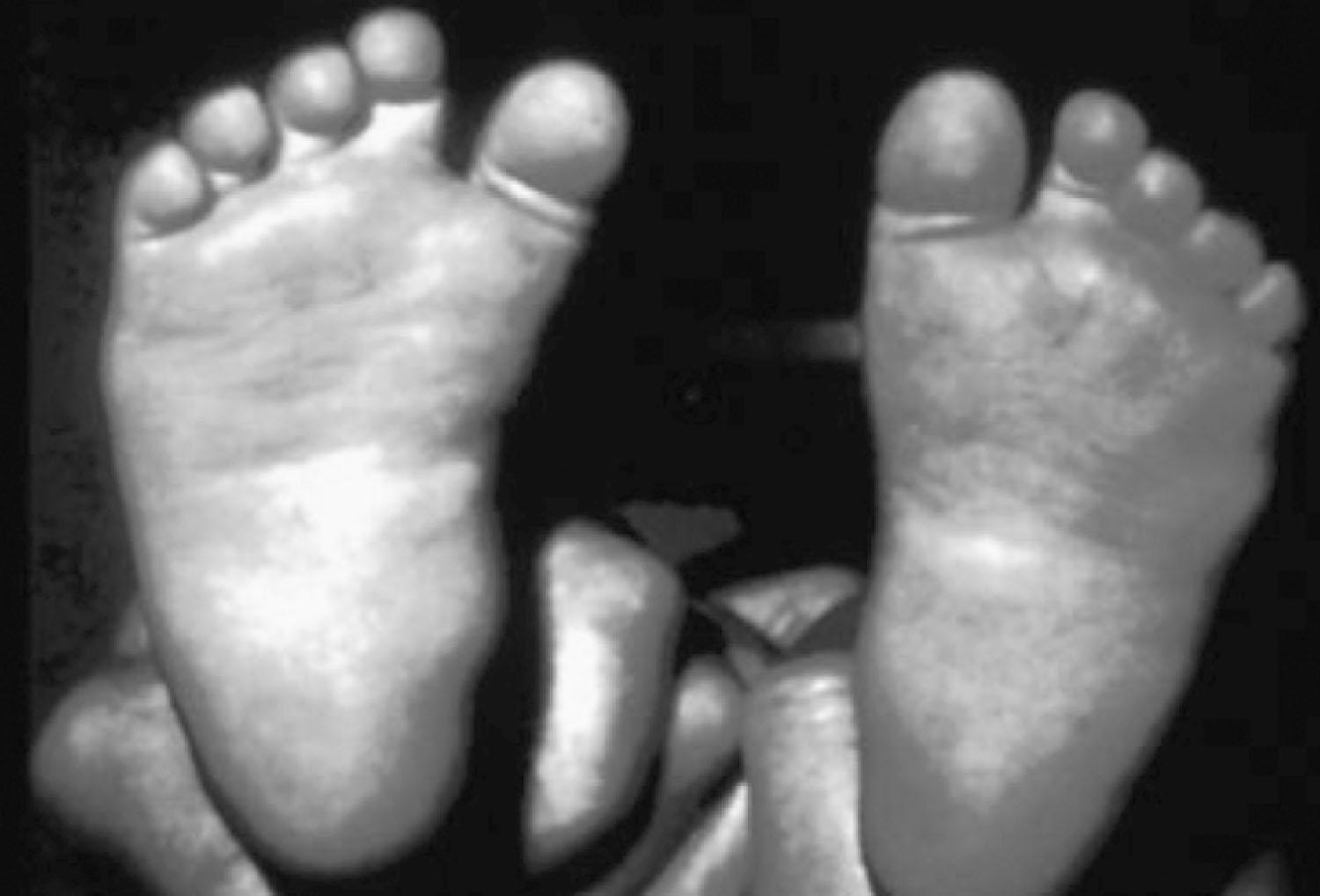Physical Address
304 North Cardinal St.
Dorchester Center, MA 02124
In newborns and non–weight-bearing infants, the difference between posturing and deformity is important. Posturing is the habitual position in which the infant holds the foot; passive range of motion is normal. Deformity produces an appearance similar to posturing, but passive motion is restricted. Most pediatric foot disorders are painless. Foot pain is more common in older children ( Table 201.1 ).
| AGE GROUP | DIAGNOSTIC CONSIDERATIONS |
|---|---|
| 0–6 years |
|
| 6–12 years |
|
| 12–18 years |
|
A clubfoot deformity involves the entire leg, not just the foot. It affects 1 in 1,000 newborns and is bilateral in one-half of cases. The tarsals in the affected foot are hypoplastic; the talus is most affected. The muscles of the limb are hypoplastic because of the abnormal tarsal interactions, which leads to a generalized limb hypoplasia, mainly affecting and shortening the foot. There is usually atrophy of the calf musculature.
Family history is important. Clubfoot can be congenital or teratologic. Although congenital clubfoot (75% of all cases) is usually an isolated abnormality, every infant should be assessed for developmental dysplasia of the hip. Teratologic clubfoot is associated with a neuromuscular disorder, such as myelomeningocele, arthrogryposis, or other syndromes. Positional foot deformities that occur due to abnormal positioning in utero can be differentiated from clubfoot as they typically resolve without treatment in the early months of life.
The diagnosis is seldom confused with other disorders ( Fig. 201.1 ). The presence of clubfoot should prompt a careful search for other abnormalities. The infant will have midfoot cavus, forefoot adduction, hindfoot equinus and varus, and varying degrees of rigidity. All are secondary to the abnormalities of the talonavicular joint. Calf atrophy and foot shortening are more noticeable in older children.

In infants, radiographs and advanced imaging are rarely necessary for assessment because their tarsals have incomplete or absent ossification. The navicular ossifies at about 3 years of age for females and 4 years for males. As children age, radiographs can be used to follow the tibial calcaneal and lateral talocalcaneal angles and to assess navicular positioning.
The goal of treatment is to correct the deformity and preserve mobility and function. The gold-standard for the treatment of clubfoot is the Ponseti method of serial casting. Treatment includes a percutaneous tenotomy of the Achilles tendon to help correct the equinus deformity near the end of casting. An abduction brace is initiated after casting and is an essential part of the treatment of clubfoot. Children who are unable to achieve good compliance with bracing recommendations demonstrate high rates of recurrence and need for further casting or surgery.
The two most common procedures performed for recurrent clubfoot include a repeat Achilles lengthening and a tibialis anterior tendon transfer. Rarely, more aggressive surgical procedures may need to be done. Complications of untreated clubfoot include severe disability. Complications of treated clubfoot include recurrence and stiffness.
Metatarsus adductus is the most common foot disorder in infants. It is characterized by a convexity of the lateral foot ( Fig. 201.2 ) and is caused by in utero positioning. It is bilateral in half of cases. Occurring equally in males and females, it is more common in first-born children because of the smaller primigravid uterus. Two percent of infants with metatarsus adductus have developmental dysplasia of the hip.

The forefoot is adducted and sometimes supinated, but the midfoot and hindfoot are normal. The lateral border of the foot is convex, while the medial border is concave. Normal ankle dorsiflexion and plantar flexion differentiate this deformity from clubfoot. With the midfoot and hindfoot stabilized, the deformity can be pushed beyond a neutral position (into abduction). Older children may present with an in-toeing gait.
Become a Clinical Tree membership for Full access and enjoy Unlimited articles
If you are a member. Log in here